I decided to take pictures of my last buffered performic. Ever since i’ve starting using this route, I’ve never looked back on a wacker.
Step 1 Safrole isomerisation at atmospheric pressure
I cant be running a vacuum pump all night so this is my way to go:
Set-up for a regular distillation. Place the safrole(purified by simple distillation under vacuum) along with 2-5% KOH under good stirring. I use about 2.5% and it works like a charm. The temp is brought up to around 180 to get rid of all water. 1 hour at that temp is usually fine, I dont really keep track so much. Then the solution is left to stir at around 140-150 overnight. You dont loose any safrole even without a refluxing column at that temperature . The next morning, vacuum is connected to the system and isosafrole distilled. Yields are always 95-98%. The easy part about this isomerisation is that you only have to rig one setup for the whole process. For those who have never prepared isosafrole, there are 2 distinct properties I use to discriminate. First isosafrole has a different smell then safrole, a lot weaker. Take sniff of safrole. Take a sniff of coffee beans. Smell iso. Its different isnt it? Then look at iso under light. It doesnt refract light as much as pure safrole. I even can see it in the receiver flask as it is distilled. Maybe you will end-up with 1% safrole, but it doesnt change a thing for later stages.
Step 2 Forming the glycol
Using a 2L flask, this is the most iso you can convert to keep control of the reaction IMHO.
300 grams iso
91 grams Sodium Bicarbonate(Arm n hammer )
800 ml DCM
279 grams H2O2 35%
461 grams Formic acid 88%
1. Forming the peracid
I suggest making 2 half batches of peracid for this reaction. So 140 grams peroxyde with 230 formic. To a stirring solution of peroxyde on a cool water bath is added the formic all at once. This is left to stir 30-45 minutes. The reaction isnt really exothermic.
2.The 2L flask
While the peracid is forming, place the iso, bicarb and dcm in this order in th 2L flask and leave to stir. Set-up a refluxing column along with an addition funnel on those 2 necks. The solution will look like that:
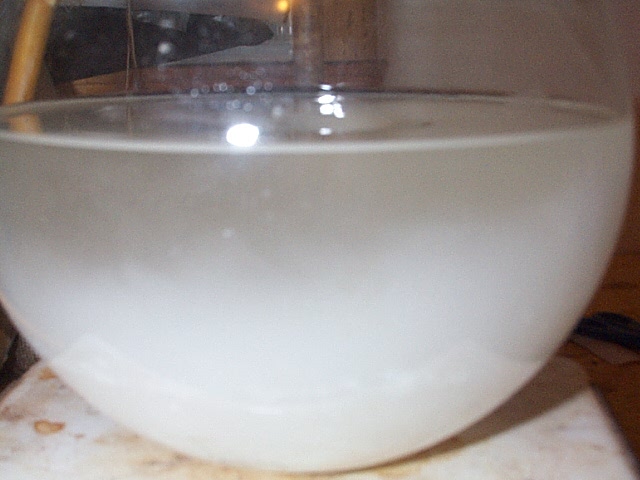
3. Adding the peracid
Place your freshly formed peracid in the addition funnel and start adding the peracid over the course of about 90 minutes. The solution will slowly start to turn yellow, it will reflux, and a lot of foam is usually produced in the early stages. Just adjust your drip rate a little slower and it will calm down. About 15 minutes in it looks like that:
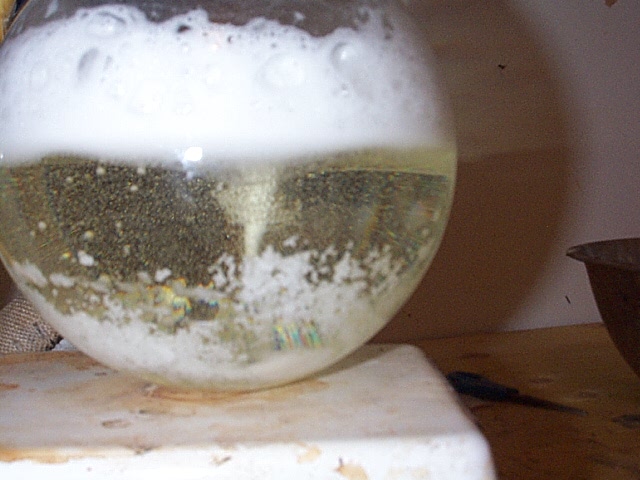
The foam will subside and 1 hour into peracid addition it looks like that
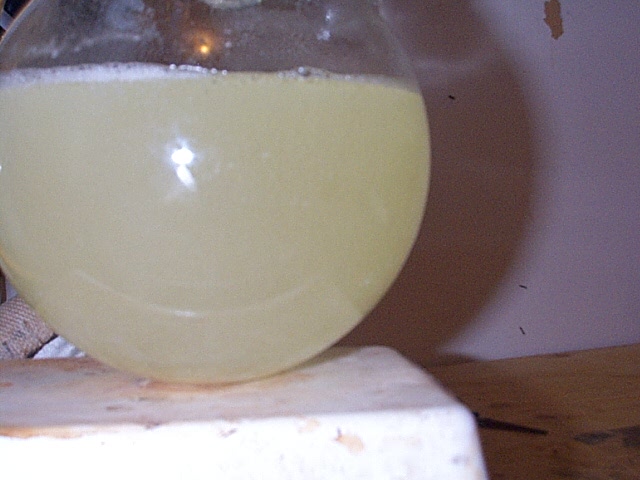
4. Forming the peracid(part 2)
When about 45 minutes into addition, start preparing your second batch of peracid. That way it will be fresh when you finish dripping in the first half.
I believe doing so cuts down on the amount of peracid that decomposes. Performic acid is not so stable so even after 2 hours, you see it starting to bubble, meaning its decomposing. At least thats always been my experience using ACS grade Formic and hydroponics store peroxyde( I wouldnt want to order formic and peroxyde from the same company)
5. Then leave to stir for an extra 24 hours. The solution progresses from white to yellow to orange, much like orange juice. This is what the solution looks like in the end. You can see that there is still enough breathing room in the flask. At least I’ve never add a problem.
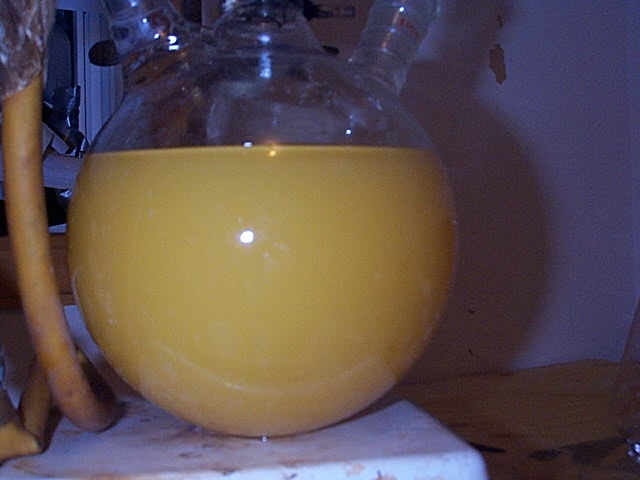
6. Place in a sep funnel, sep off the dcm, extract with a little more dcm. In the sep, the layers look like that:
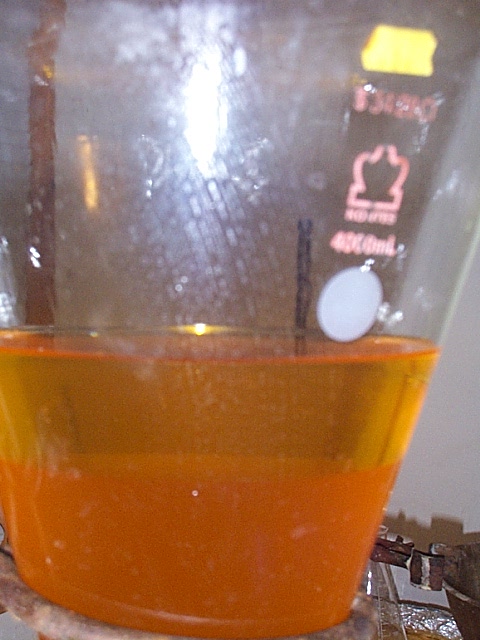
7. Distill off the dcm using a water bath. I like to do that overnight. Its a lot of dcm to be distilled out, so you can save-up some time there. Weight your glycol. From this one I got about 435 grams of glycol, its always been nearly quantitative. The glycol is red/dark orange and looks like:
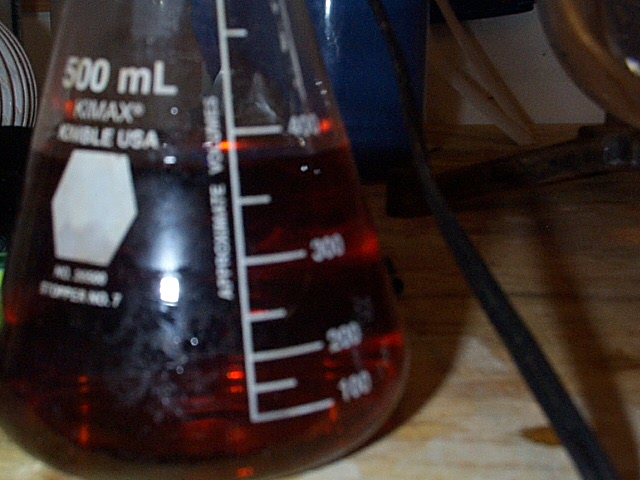
Step 3 HCl hydrolysis
Thanks to Chromic I have never needed to do a sulfuric acid hydrolysis. HCl is really golden. In a 2L flask, you will have to do 2 hydrolysis by splitting the glycol in 2.
You need
435 grams glycol
540 ml MeOH
900 ml water
900 ml muriatic acid
So 270 ml MeOH and 450 ml water are combined and warmed to about 60 degrees. The glycol is added(217.5 grams) followed by 450 ml muriatic acid. Upon acid addition the solution will turn a little pink/orange.
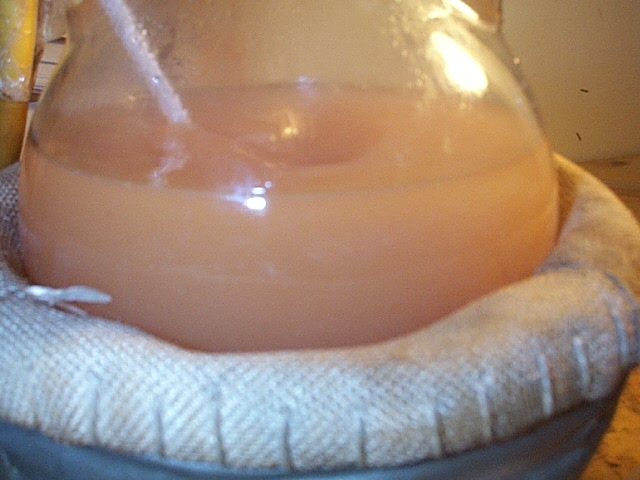
The solution is refluxed for 2.5 hours at about 80 degrees celcius. It will start to change color maybe 15 minutes after acid addition. You will see oil starting to stream on the top as it is stirring. One hour in, you will definitely see globules of oil floating around and the solution is more brown by now. Like that:
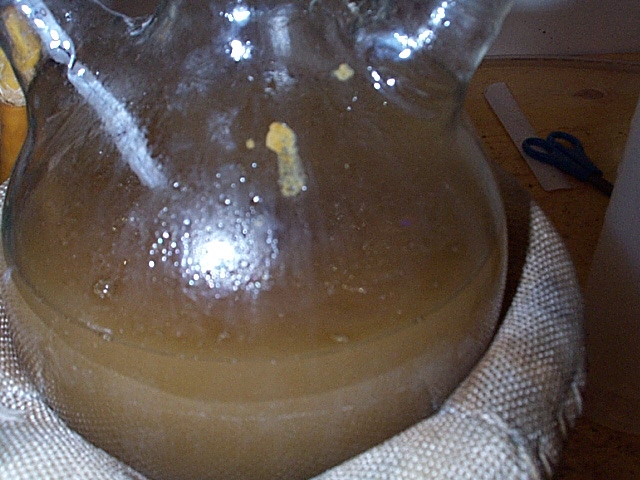
After 2.5 hours, cool down to room temp using a water bath to speed things up a bit. Place in sep funnel and sep off bottom layer. This is your oil, its dark red/black. The top layer is orange. Add a litle and extract the top layer again. 2 times 100 ml dcm is more then plenty I believe.
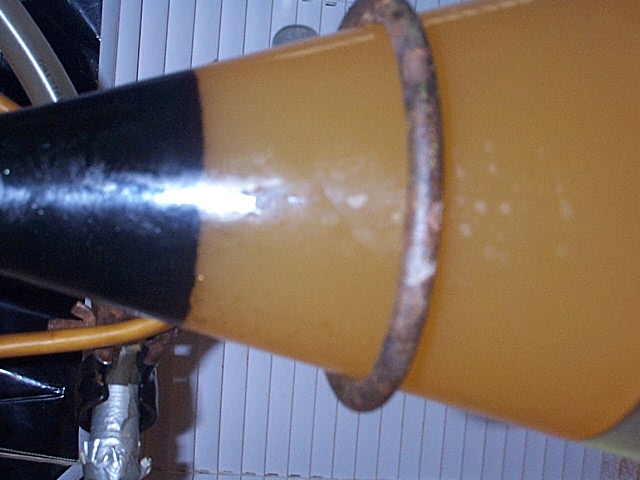
This step is repeated twice if you dont have anything bigger then a 2L flask
Take your dcm/oil( combine both hydrolysis then wash) layer and wash it a couple of times with 5%NaOH. Be patient and make sure all the dcm is out. This can take multiple sepp off/wait cycles. But if you want to increase your yield do so. Then wash with fresh water, followed by brine. You can then dry it even more with epsom salts if you want.
Distill dcm. Start vacuum and distill off your ketone.
I will look like that:
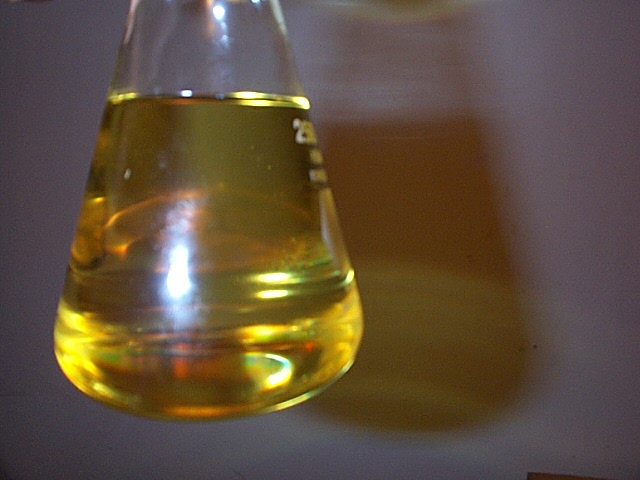
This run afforded 244 grams of ketone. 100 grams were used a la RoundBottom, final yield of recrystalized amine 85 grams.
So 900 grams of iso could end as about 600-650 grams of salt
I welcome any inputs, experiences from other bees that have experience with this synth as there is always room for improvement.